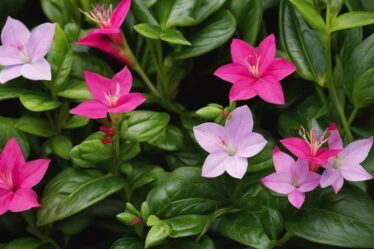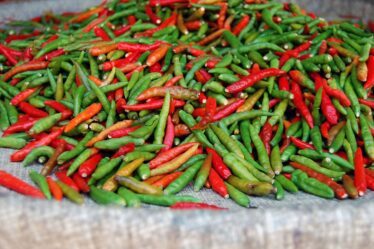
Cubeb pepper, also known as Java pepper or tailed pepper, is a type of spice that is derived from the dried berries of the Piper cubeba plant. It is native to Java and other Indonesian islands, and has been used in cooking for centuries. Cubeb pepper is known for its unique flavor profile, which is both spicy and slightly sweet, with hints of citrus and pine. It is often used as a substitute for black pepper in recipes, but can also be used to add a distinct flavor to dishes.
In cooking, cubeb pepper can be used in a variety of ways. It can be ground and used as a seasoning for meats, vegetables, and soups. It can also be used whole in pickling brines or added to marinades for an extra kick of flavor. Cubeb pepper pairs well with other spices such as cinnamon, cloves, and cardamom, and can be used to add depth and complexity to dishes.
Key Takeaways
- Cubeb Pepper is a spice that comes from the dried berries of the Piper cubeba plant.
- It has a long history of use in traditional medicine and culinary traditions in Asia and Europe.
- Cubeb Pepper has a unique flavor profile that is described as slightly bitter, pungent, and with hints of camphor and eucalyptus.
- It has potential health benefits, including anti-inflammatory and antimicrobial properties.
- Cubeb Pepper can be used in a variety of dishes, including meat, fish, and vegetable dishes, as well as in spice blends and marinades.
The History and Origin of Cubeb Pepper
Cubeb pepper has a long history that dates back to ancient times. It is believed to have originated in Java, Indonesia, where it was first cultivated and used by the local population. The use of cubeb pepper spread throughout Southeast Asia and the Middle East, where it became a popular spice in traditional cuisines.
Historically, cubeb pepper was highly valued for its medicinal properties. It was used to treat various ailments such as digestive issues, respiratory problems, and even as an aphrodisiac. In addition to its medicinal uses, cubeb pepper was also used as a flavoring agent in food and beverages.
During the Middle Ages, cubeb pepper became an important trade commodity in Europe. It was highly sought after for its unique flavor and was often used as a substitute for black pepper, which was expensive and difficult to obtain at the time. The spice trade played a significant role in the spread of cubeb pepper across the world, and it eventually made its way to other parts of Europe, as well as Africa and the Americas.
The Unique Flavor Profile of Cubeb Pepper
Cubeb pepper has a distinct flavor profile that sets it apart from other types of pepper. It has a spicy and slightly sweet taste, with hints of citrus and pine. The flavor is often described as complex and aromatic, with a lingering heat that is not overpowering.
Compared to black pepper, cubeb pepper has a more complex flavor profile. While black pepper is known for its sharp and pungent taste, cubeb pepper offers a more nuanced and layered experience. The citrus and pine notes add a refreshing element to dishes, while the spiciness provides a satisfying kick.
The unique flavor of cubeb pepper can enhance a wide range of dishes. It can be used to add depth and complexity to soups, stews, and sauces. It pairs well with meats such as beef, lamb, and game, as well as vegetables like roasted root vegetables or grilled eggplant. Cubeb pepper can also be used in baking to add a twist to sweet treats like cookies or cakes.
Health Benefits of Cubeb Pepper
| Health Benefits of Cubeb Pepper |
|---|
| 1. Anti-inflammatory properties |
| 2. Antimicrobial effects |
| 3. Digestive aid |
| 4. Respiratory health |
| 5. Pain relief |
| 6. Antioxidant properties |
| 7. Immune system booster |
| 8. Anti-cancer potential |
In addition to its culinary uses, cubeb pepper also offers several health benefits. It is rich in antioxidants, which help protect the body against damage from free radicals. Antioxidants have been linked to a reduced risk of chronic diseases such as heart disease, cancer, and diabetes.
Cubeb pepper also contains compounds that have anti-inflammatory properties. Inflammation is believed to play a role in the development of many chronic diseases, so consuming foods with anti-inflammatory properties can be beneficial for overall health.
Furthermore, cubeb pepper has been studied for its potential antimicrobial properties. Some research suggests that it may help fight against certain types of bacteria and fungi, making it a natural alternative to conventional antimicrobial agents.
While more research is needed to fully understand the health benefits of cubeb pepper, incorporating it into your diet can be a flavorful way to add a boost of antioxidants and potentially beneficial compounds to your meals.
Culinary Uses of Cubeb Pepper
Cubeb pepper is a versatile spice that can be used in a variety of dishes and cuisines. It is commonly used in Indonesian, Middle Eastern, and North African cuisines, where it adds a unique flavor to traditional dishes.
In Indonesian cuisine, cubeb pepper is often used in spice blends and curry pastes. It is also used to flavor grilled meats and seafood, as well as soups and stews. In Middle Eastern cuisine, cubeb pepper is used in spice mixes such as ras el hanout, which is commonly used in Moroccan dishes. It is also used in pickling brines and marinades.
Cubeb pepper can also be used in Western cuisine to add a twist to familiar dishes. It can be used as a substitute for black pepper in recipes, or added to spice rubs for meats. It pairs well with ingredients such as citrus fruits, garlic, and herbs like thyme or rosemary.
How to Incorporate Cubeb Pepper into Your Cooking

If you’re interested in trying cubeb pepper in your cooking, here are some tips for incorporating it into your recipes:
1. Grinding: Cubeb pepper is often sold whole, so you will need to grind it before using it in your recipes. You can use a mortar and pestle or a spice grinder to grind the peppercorns into a fine powder.
2. Storage: To keep cubeb pepper fresh and flavorful, store it in an airtight container in a cool, dark place. Avoid storing it near heat sources or in direct sunlight, as this can cause the flavor to degrade.
3. Recipes: There are many recipes that feature cubeb pepper as a key ingredient. You can use it in marinades for grilled meats, add it to soups and stews for a spicy kick, or use it in spice blends for rubs or seasonings.
Here is a simple recipe to get you started:
Grilled Cubeb Pepper Chicken Skewers
Ingredients:
– 1 pound boneless, skinless chicken breasts, cut into cubes
– 2 tablespoons olive oil
– 1 tablespoon ground cubeb pepper
– 1 teaspoon salt
– 1 teaspoon garlic powder
– 1 teaspoon paprika
– Wooden skewers, soaked in water for 30 minutes
Instructions:
1. In a bowl, combine the olive oil, ground cubeb pepper, salt, garlic powder, and paprika. Mix well to form a paste.
2. Add the chicken cubes to the bowl and toss to coat them evenly with the spice paste. Let marinate for at least 30 minutes, or up to overnight in the refrigerator.
3. Preheat your grill to medium-high heat.
4. Thread the marinated chicken cubes onto the soaked wooden skewers.
5. Grill the skewers for about 8-10 minutes, turning occasionally, until the chicken is cooked through and slightly charred.
6. Serve the grilled cubeb pepper chicken skewers with your favorite dipping sauce or alongside a salad or rice.
Pairing Cubeb Pepper with Other Spices and Ingredients
Cubeb pepper pairs well with a variety of spices and ingredients, allowing you to create complex and flavorful dishes. Here are some spices and ingredients that complement cubeb pepper:
1. Cinnamon: The warm and sweet notes of cinnamon pair well with the spiciness of cubeb pepper. Try adding a pinch of ground cinnamon to dishes that feature cubeb pepper, such as stews or roasted vegetables.
2. Cloves: Cloves have a strong and aromatic flavor that can enhance the complexity of dishes that use cubeb pepper. Use whole cloves in marinades or spice blends, or add ground cloves to soups or sauces.
3. Cardamom: Cardamom has a citrusy and slightly sweet flavor that complements the citrus notes of cubeb pepper. Use whole cardamom pods in rice dishes or grind them to add to spice blends or baked goods.
4. Citrus fruits: The bright and refreshing flavors of citrus fruits such as lemon, lime, or orange can balance the spiciness of cubeb pepper. Squeeze some fresh citrus juice over grilled meats or add zest to marinades or dressings.
5. Garlic: The pungent and savory flavor of garlic pairs well with the spiciness of cubeb pepper. Use fresh garlic cloves in marinades or sautéed dishes, or add garlic powder to spice blends or rubs.
When using cubeb pepper with other spices and ingredients, it’s important to balance the flavors to create a harmonious dish. Start with small amounts of each spice or ingredient and taste as you go, adjusting the quantities to achieve the desired flavor profile.
Where to Buy Cubeb Pepper
Cubeb pepper can be found in specialty spice shops, gourmet food stores, and some well-stocked grocery stores. It is also available for purchase online from various retailers.
When buying cubeb pepper, it’s important to ensure that you are getting a high-quality product. Look for peppercorns that are whole and intact, with a strong aroma. Avoid purchasing pre-ground cubeb pepper, as it can quickly lose its flavor and potency.
If possible, buy cubeb pepper from reputable sources that specialize in spices and herbs. This will ensure that you are getting a fresh and authentic product. Read customer reviews and check for certifications or quality guarantees to ensure that you are buying from a reliable seller.
Storage and Shelf Life of Cubeb Pepper
To keep cubeb pepper fresh and flavorful, it’s important to store it properly. Here are some tips for storing cubeb pepper:
1. Store in an airtight container: Transfer the cubeb pepper to an airtight container, such as a glass jar or airtight plastic bag. This will help protect it from moisture, air, and light, which can cause the flavor to degrade.
2. Keep in a cool, dark place: Store the cubeb pepper in a cool, dark place, such as a pantry or cupboard. Avoid storing it near heat sources or in direct sunlight, as this can cause the flavor to deteriorate.
3. Use within a year: Cubeb pepper has a shelf life of about one year when stored properly. After this time, the flavor may start to diminish. To ensure that you are using fresh cubeb pepper, it’s best to buy small quantities and replenish your supply as needed.
Signs of spoilage or degradation include a loss of aroma or flavor, mold or discoloration on the peppercorns, or a rancid smell. If you notice any of these signs, it’s best to discard the cubeb pepper and replace it with a fresh batch.
Why You Should Try Cubeb Pepper in Your Cooking
Cubeb pepper is a unique and versatile spice that can add depth and complexity to your dishes. Its distinct flavor profile, with its spicy and slightly sweet taste, makes it a great addition to a variety of cuisines and recipes.
Not only does cubeb pepper enhance the flavor of your dishes, but it also offers potential health benefits. It is rich in antioxidants and has anti-inflammatory properties, making it a flavorful way to boost your overall health.
Whether you’re a seasoned cook or just starting out in the kitchen, cubeb pepper is a spice worth exploring. Its versatility and unique flavor make it a great addition to your spice rack, and it can elevate your dishes to new heights. So why not give cubeb pepper a try and discover the wonders of this ancient spice?
If you’re a fan of unique and exotic flavors, then you’ll definitely want to check out this in-depth analysis of the Surinam cherry on Flavorful Sips. But why stop there? Expand your culinary horizons even further with their article on the heavenly magic of licuados. And if you’re looking for a delicious recipe to try, don’t miss their cilantro lime rice recipe. With so many tantalizing options, Flavorful Sips is the perfect destination for food enthusiasts. And while you’re there, don’t forget to explore their article on cubeb pepper, a lesser-known spice that adds a delightful twist to any dish. Discover the wonders of cubeb pepper here.



